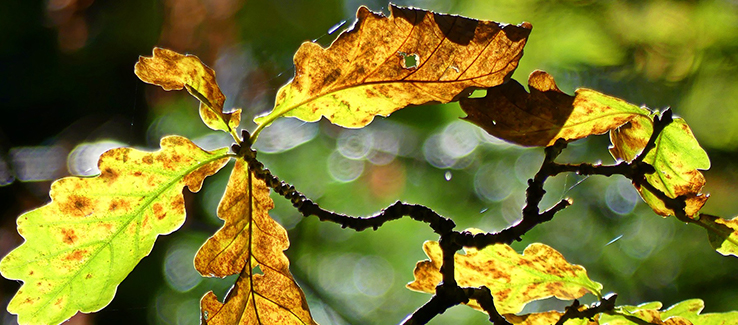Leaf Spot Disease Identification and Treatment
Prevent your trees, shrubs, and plants from falling victim to and dying from leaf spot disease. Knowing how to recognize leaf spot, how it spreads, and how you can stop it will help you keep your landscape flourishing.
fasttreeremovalatlanta.com gathered information on what leaf spot is, how to identify it, and how to treat it.
Leaf Spot Disease
Leaf spot is a general term used to describe multiple plant diseases. These diseases weaken trees, shrubs, and plants by reducing available foliar space for photosynthesis. Leaf spot diseases may indicate (when present with other symptoms) Anthracnose, nematodes, canker disease, insect infestation, root rot, or herbicide injury. Leaves affected by leaf spot will eventually yellow and drop prematurely.
Note: Most forms of leaf spot diseases affect a small portion of a tree’s foliage and cause minor stress in a single season. When allowed to persist over multiple seasons, leaf spot diseases can considerably weaken a tree, allowing for secondary disease infections and insect infestations.
Leaf Spot Disease Identification
Depending on how the host is infected will determine how leaf spot disease will reveal itself. You can identify leaf spot disease by observing the following:
Bacteria – Bacterial leaf spots appear as necrotic lesions (circular or irregular), often appearing to have a yellow outline.
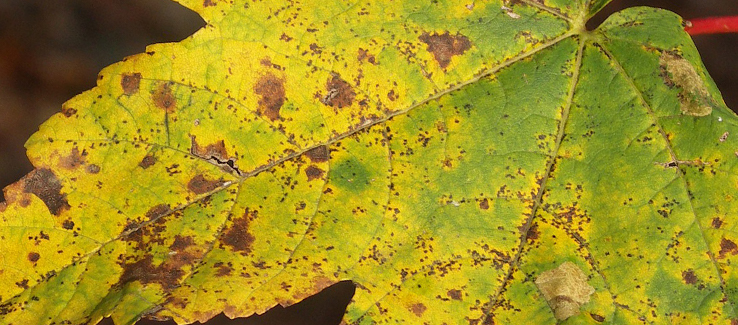
Typical symptoms of bacterial leaf spots include the spot’s blackening post-infection. Eventually, older lesions dry, become papery. Bacterial spots may also exude white, yellow, cream, or silver ooze depending on the bacteria type, coming from splitting/opening lesions or the underside of the spots.
Fungi – Fungal leaf spots occur from plant tissue necrosis. Such necrotic lesions consist of spots of dead and collapsed cells on the host’s foliage, typically localized in area and shape.
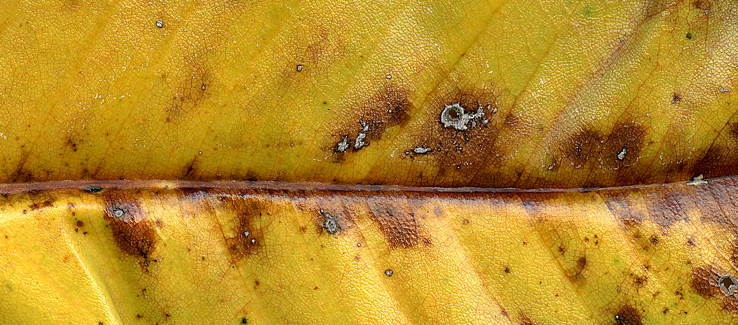
A standout fungal infection feature is spore presence in the center of the spots. Fungal leaf spots often appear with a brown, black, or reddish in color with a darker margin.
Virus – Leaf spots can also be visible virus infection symptoms and are referred to as systemic symptoms. These leaf spots display chlorosis from chlorophyll development repression. Leaves may yellow and can have a spotted green or yellow appearance, chlorotic or necrotic rings (ringspots). No signs of the viral pathogen itself will be apparent as in other infections; detection of virus infections requires a microscope.
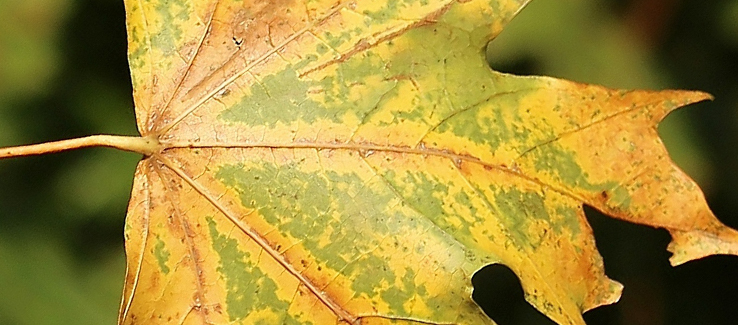
Note: All forms of leaf spot diseases can result in wilting foliage. This occurs as foliage cell tissue, cuticle, and epidermis are destroyed in infected areas, causing uncontrollable water loss.
Tip: Multiple growing seasons afflicted by leaf spots can result in crippled photosynthetic activity, causing undersized foliage, smaller blossoms, reduced growth, and lower yield.
Leaf Spot Disease Treatment
Leaf spot-causing organisms survive or overwinter in infected, fallen leaves and twigs. Some of these organisms may persist in dying or dead twigs on the host.
Most disease damage occurs in the spring months, during wet weather. Disease-causing agents can be carried by wind or splashing water to newly emerging foliage where they germinate in the moisture, infecting the leaves. Overhead watering can also provide ideal disease spreading conditions.
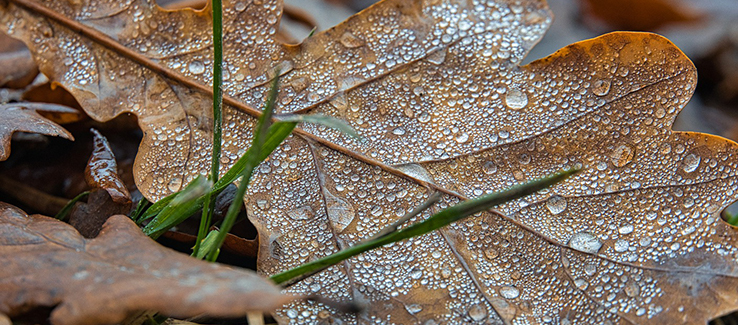
Here are several ways to effectively deal with or treat leaf spot disease:
Do Nothing – Most tree species tolerate leaf spots with little to no permanent damage. A tree affected early in the growing season will typically re-leaf with the new foliage potentially not affected. However, if such defoliation occurs during multiple growing seasons, even the most established plants can be adversely affected.
Remove and Destroy – (preferably by fire) fallen leaves and twigs in the fall. The causal fungi or bacteria survive in fallen, decaying leaves and organic debris.
Avoid Splashing Water – Cease any overhead watering, spraying, or other watering methods that result in splashing.
Seasonally Prune Your Trees – During a tree’s dormant season, dead, dying, or infected areas of your tree should be pruned with clean and sanitized equipment. For more reading on tree pruning, visit fasttreeremovalatlanta.com/how-to-prune-tree-branches
Tip: Your pruning and gardening equipment should always be sanitized between use on different trees or plants. A 90% water and 10% bleach solution will eliminate most pathogens.
Promote Tree and Plant Health – Most plant life can tolerate some defoliation. Keeping them in good health and thriving will help them survive such attacks. Read more on tree care at fasttreeremovalatlanta.com/how-to-care-for-trees
Chemical Leaf Spot Control – Chemical control should be used as a last resort or as a preventative measure when your trees are stressed from other disease infections or pest infestations. Consider the following:
- If the tree’s foliage is already out and showing signs of leaf spot, chemical control will be ineffective. It is recommended to wait until before bud break next spring.
- Apply fungicide as buds begin to swell in early spring.
- Follow up with a second application five to ten days after bud break.
- Multiple applications may be necessary during a rainy spring. (Manufacturer’s recommendations will vary based on the disease you are treating and the fungicide to be used. It would be helpful to have the disease identified by an ISA certified arborist or your university extension/testing facility.)
Tip: When chemical control is recommended, use a fungicide containing propiconazole. For those reluctant to employ chemical control methods, spray a mild bicarbonate of soda (baking soda) solution instead.
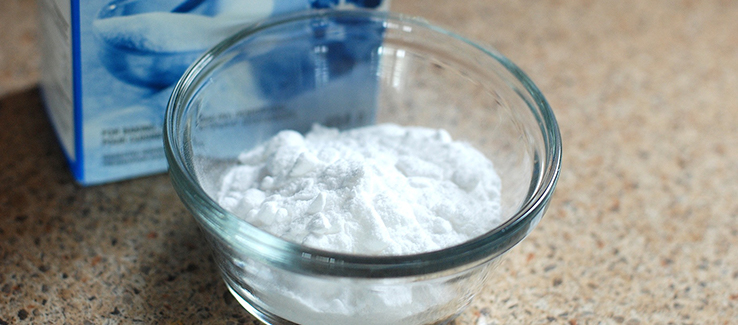
Replace the Infected Tree or Plant – When your tree or plant is continually impacted by leaf spot diseases, replace it with a different kind of plant, a more resistant, or more tolerant tree species. A local arborist or nursery can help you with your selection.
How Is Leaf Spot Disease Treated
In this article, you discovered what leaf spot is, how you can identify its causal agent, and how to treat and resolve it.
Knowing how to identify and treat leaf spot disease will help you prevent widespread or multiple season breakouts of this unsightly affliction.
Ignoring the progression of leaf spot in your garden or on your landscape can result in the loss of plants or the death of your trees.
Sources:
extension.umn.edu/plant-diseases/leaf-spot-diseases-trees-and-shrubs
ladybug.uconn.edu/FactSheets/leaf-spot-disease-of-trees-and-shrubs.php
nwdistrict.ifas.ufl.edu/hort/2012/07/14/leaf-spots-may-mean-a-fungal-disease/
(404) 220-9965
(404) 220-9963

